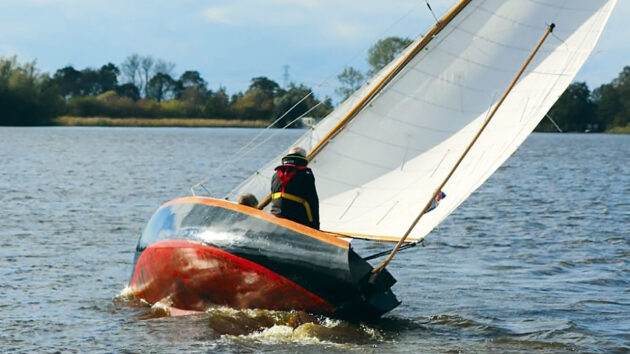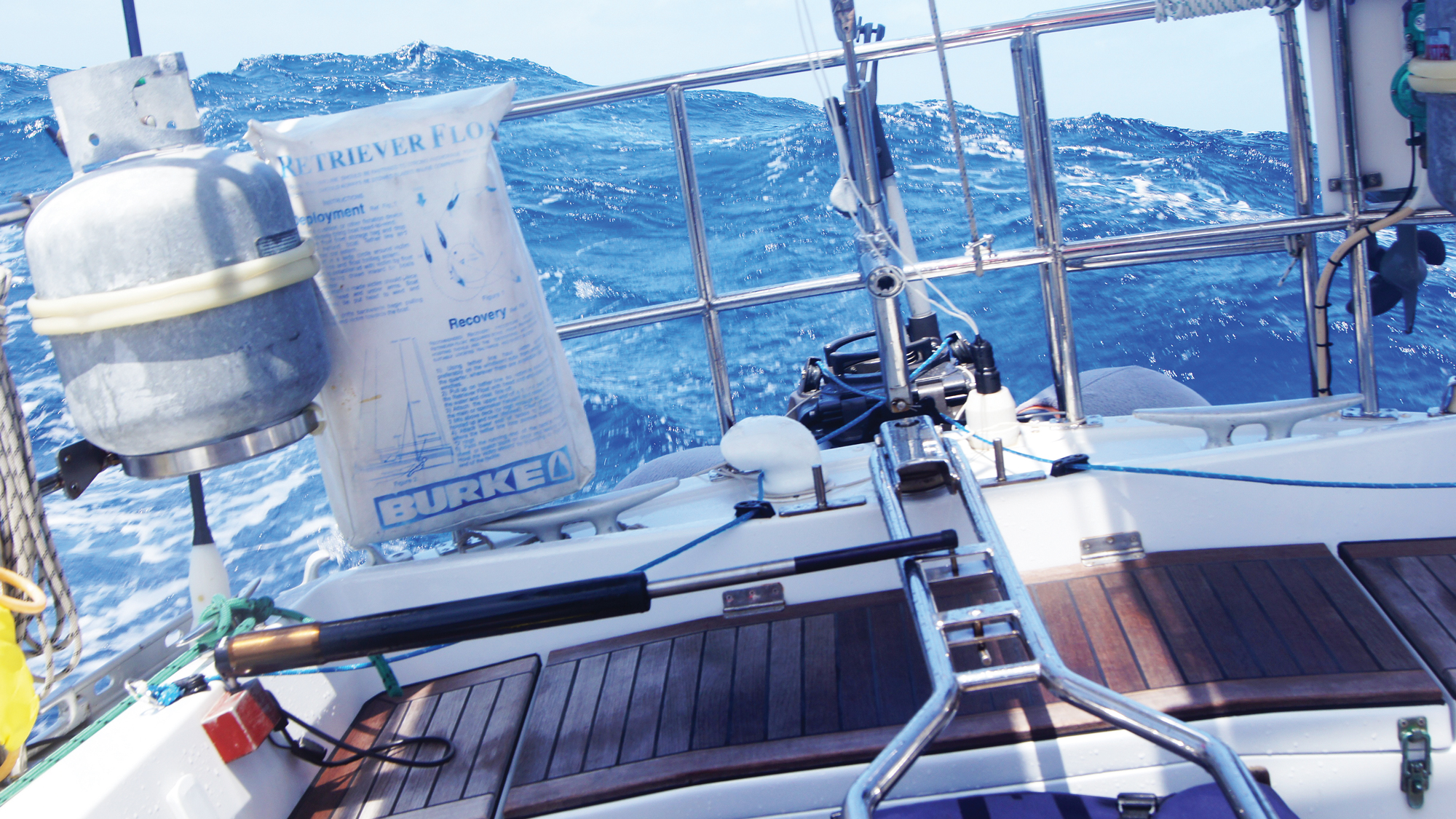After a mere 12 years restoration, Gerben Bergsma gets a little more than he bargained for in a race from Harlingen to the isle of Terschelling
I first saw the boat after reading a small advertisement in a local newspaper. It was lying under a red tarpaulin. The varnish was faded, the boat was full of water, but I immediately fell for the beautiful lines of the stern. I made an offer which was accepted.
I was the owner of a 6.35m pocket cruiser.
That spring we painted the hull and varnished the cabin and we – our one-year-old girl and my lovely and very pregnant wife – spent a beautiful holiday at the Frisian lake district. After that the boat appeared to need an extensive refit. It lasted 12 years.
One of the reasons for the delay was the drastic change of plan on the day I intended to restore the teak deck with my brother. ‘Wouldn’t it be better if we demolished the cabin?’ he said thoughtfully. ‘It would make a very, very sharp and racy ship!’

It took a dozen years to restore Gerben’s 6.35m pocket cruiser, Alba. Photo: Gerben Bergsma
Before I knew it, he had put a screwdriver in the old and weary mahogany and asked silently for permission with a mischievous grin. After a few moments of thought, I agreed.
When it was done, we looked at each other and were totally satisfied at the astonishing result, while dense raindrops started dripping on the now open hull.
What followed was a total refit. New deck beams, new decks, new cockpit, new keel bolts. Everything was done while more and more kids were born, a career was made, houses got sold and bought. But thanks to the help of my father and brothers we managed to finish the project.
After she was launched, I named the boat Alba and found a boathouse in Grou, Friesland. We raced our new boat every Thursday night in the Frisia Cup, with a lot of pleasure and a little success.
Article continues below…
‘Sometimes your boat knows best’
Zen Again was heading west for Africa. We had departed our home port of Fremantle, Western Australia in June. We…
‘Never before have I sailed in such wild weather’ – struck by a ‘weather bomb’ near New Zealand
Sammy, my sister, was ready to go. She couldn’t wait to put on her skipper’s hat and head off on…
My brother and I then made a test trip on the IJsselmeer, the former inland sea. We sailed to Urk in calm conditions. The next day we sailed close-hauled in 20 knots of wind to the old town of Medemblik.
It was a cloudy, grey and bleak day and the boat appeared to be slow but rather seaworthy. Next day we sailed under spinnaker from Medemblik to Stavoren and completed the triangle. After this, more open waters beckoned.
I always dreamed of taking part in the race from Harlingen to the isle of Terschelling on the Wadden Sea (the HT race), but I thought I didn’t have the boat for it. After the successful IJsselmeer trip I confirmed the statement ‘the best boat to sail around the world on, is the boat you own’. My boat was certainly good enough to participate in the HT race.

Gerben and his brother enjoyed racing together. Photo: Gerben Bergsma
The day of the race started calmly. Nevertheless we were excited and a bit nervous. We hoisted the spinnaker and when we entered the Blauwe Slenk we put on the second jib. Soon we were in the rear of the field of 150 boats.
When we entered the Meep the tide changed, the wind increased to 20 knots with gusts of 25 knots and we faced huge round waves which the boat easily took. We got more and more exhausted by the constant bracing and tightening and letting out of the sheets.
The salty water was dangerously reaching the cockpit edge and we were sailing with all we had to prevent the boat from taking too much water. We sailed constantly close-hauled and battled our way upwind through the North Meep.

We repeatedly noticed and were appalled that we only managed to win a few metres while we were thrown back by the current. What worried me was that the wind was blowing so hard that the plasticised charts, which I had made, blew out of my fingers no matter how hard I tried to hold on to them. Luckily, I had a few spares.
At last, we reached the finish as the very last boat. We pull-started the 60-year-old Yamaha outboard at one go and tried to reach the harbour in 25 knots of wind and high-peaked waves. We navigated through the narrow channels and I was horrified to find that the fuel was surging through the tank, because of the wild movements of the boat.
The engine faltered and I was scared to be shipwrecked on the shallow waters in sight of the harbour. Luckily we managed to reach the pierheads for the harbour; within these it was suddenly quiet and peaceful.

Open water sailing in and around the Frisian Islands. Photo: Gerben Bergsma
The harbourmaster, a large woman with long red curly hair, received us in a RIB. She rose high up behind the steering console in her red survival suit. She looked like a Viking warrior. ‘Had a nice shower lads?’ she asked, not without a bit of schadenfreude. We tried to put on a little smile.
Totally battered, we nursed our wounds in a small hotel I had reserved. The next day we returned in quite similar conditions. The third reef was pulled in again. Pointy waves licked greedily on the cockpit edge. It wore us out for the second time in two days, but at least we passed a traditional flat-bottomed boat. We were not last! After a blustery sail we finally reached the port of Harlingen.
Not fast enough for the rankings, but at least we stayed afloat!
Enjoyed reading this?
A subscription to Yachting Monthly magazine costs around 40% less than the cover price, so you can save money compared to buying single issues.
Print and digital editions are available through Magazines Direct – where you can also find the latest deals.
YM is packed with information to help you get the most from your time on the water.
-
-
- Take your seamanship to the next level with tips, advice and skills from our experts
- Impartial in-depth reviews of the latest yachts and equipment
- Cruising guides to help you reach those dream destinations
-
Follow us on Facebook, Twitter and Instagram.






